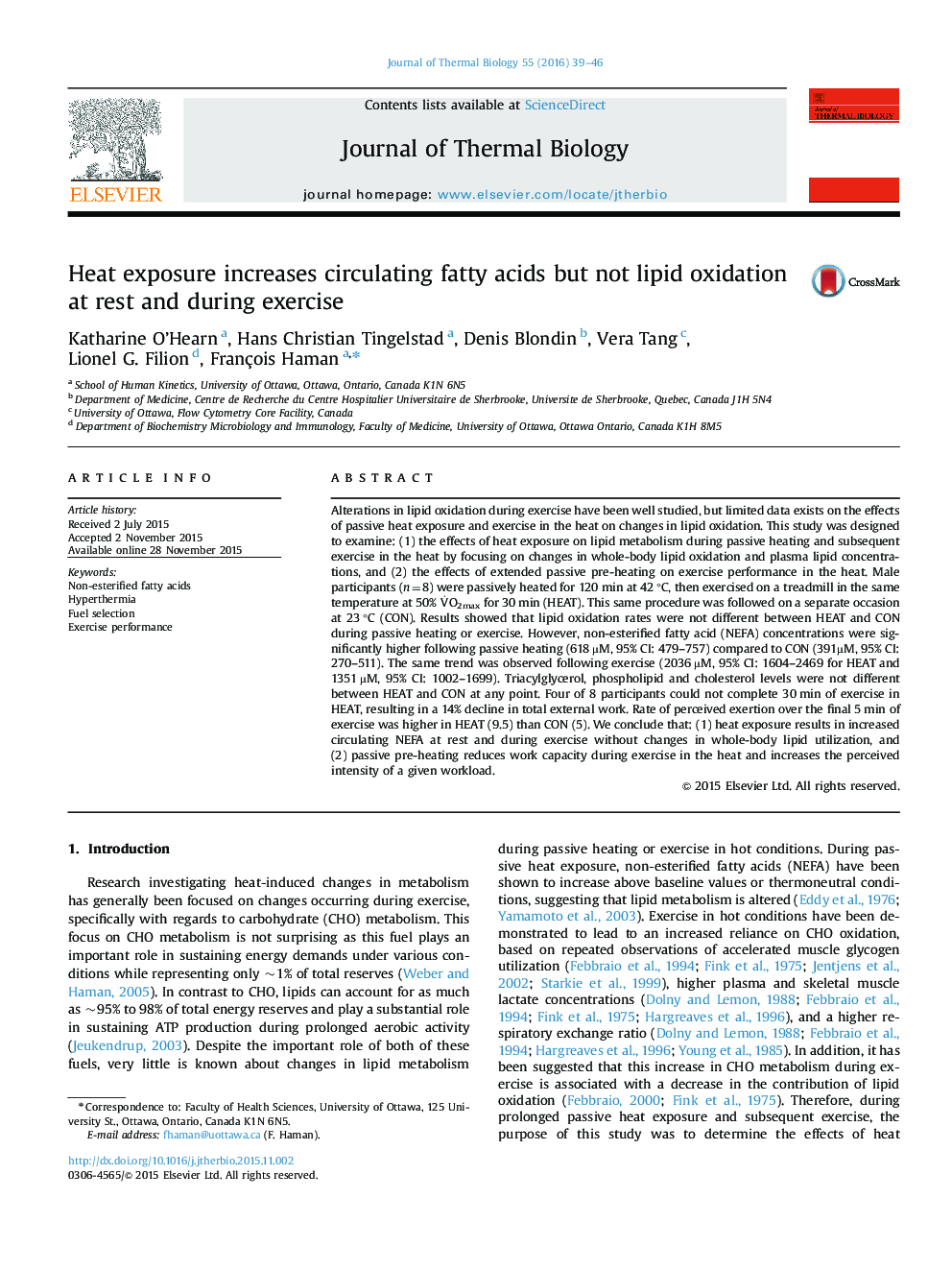| Article ID | Journal | Published Year | Pages | File Type |
|---|---|---|---|---|
| 2842691 | Journal of Thermal Biology | 2016 | 8 Pages |
Abstract
Alterations in lipid oxidation during exercise have been well studied, but limited data exists on the effects of passive heat exposure and exercise in the heat on changes in lipid oxidation. This study was designed to examine: (1) the effects of heat exposure on lipid metabolism during passive heating and subsequent exercise in the heat by focusing on changes in whole-body lipid oxidation and plasma lipid concentrations, and (2) the effects of extended passive pre-heating on exercise performance in the heat. Male participants (n=8) were passively heated for 120 min at 42 °C, then exercised on a treadmill in the same temperature at 50% VÌO2max for 30 min (HEAT). This same procedure was followed on a separate occasion at 23 °C (CON). Results showed that lipid oxidation rates were not different between HEAT and CON during passive heating or exercise. However, non-esterified fatty acid (NEFA) concentrations were significantly higher following passive heating (618 µM, 95% CI: 479-757) compared to CON (391µM, 95% CI: 270-511). The same trend was observed following exercise (2036 µM, 95% CI: 1604-2469 for HEAT and 1351 µM, 95% CI: 1002-1699). Triacylglycerol, phospholipid and cholesterol levels were not different between HEAT and CON at any point. Four of 8 participants could not complete 30 min of exercise in HEAT, resulting in a 14% decline in total external work. Rate of perceived exertion over the final 5 min of exercise was higher in HEAT (9.5) than CON (5). We conclude that: (1) heat exposure results in increased circulating NEFA at rest and during exercise without changes in whole-body lipid utilization, and (2) passive pre-heating reduces work capacity during exercise in the heat and increases the perceived intensity of a given workload.
Related Topics
Life Sciences
Agricultural and Biological Sciences
Agricultural and Biological Sciences (General)
Authors
Katharine O'Hearn, Hans Christian Tingelstad, Denis Blondin, Vera Tang, Lionel G. Filion, François Haman,
